Dead Season modeling. Although I would love to follow this path, my layout’s chosen setting is an industrial area, totally devoid of trees, save one. A dead one.
The Long Island Railroad Industrial service, or LIRR IS for short, is a small 1950’s era short line dedicated to servicing local mob owned businesses on a waterfront channel on Long Island. There is an aggregate business to load barges, and a large scrap yard also for loading various scrap loads onto barges as well.
The LIRR IS has interchange with the PRR’s elevated mainline, via grade down to the LIRR IS, where the PRR still has a local track for commuter use.
The area is quite desolate, with bare ground and two track local gravel roads. Over the years the area has staved off any growth of trees, likely due to ground pollution and constant use of heavy equipment in the area.

There is a lone remaining tree, a once majestic Sugar Maple tree that suffered a lightning strike sometime in 1949, exploding the trunk, and sending the upper 40+ feet flying to the ground, on fire. The fire raged on the remaining trunk burning off all of the smaller twigs, leaving short, burnt nubs on the remaining branches. As the fire smoldered, it hollowed the center of the trunk several feet below the strike point. A few years later, one of the branches tore away and fell to the ground, the result of a rotting crotch where the branch met the trunk.
Ten year old, Johnny “Blade” LeMerise, climbed the trunk on a dare and added an old tire swing so he and his pals could swing, sipping stolen beers and smoking Lucky Strikes from their “old men” fathers.
The dead tree was created using a large Woodland Scenics 85’ TR1112 deciduous tree armature with all but the three lowest branches removed.

After shaping the remaining branches, I sliced off the lowest branch at its crotch, leaving a torn portion on the trunk and the remains with the upper half of the tear still attached. Later, I snipped off the pointy blunt ends of the armature

Next, I used a hot glue gun at the base of the trunk to expand the exposed root system of such an old tree leaving gloppy runs on the trunk and at the ground. A piece of waxed paper was used to support the root system as it grew away from the trunk. After that I used a chisel point soldering tip on its lowest temp to smooth the hot glue from the gloppy look, using the flat of the chisel to spread it up the trunk and then using the chisel side to form grooves down the trunk to the ground.
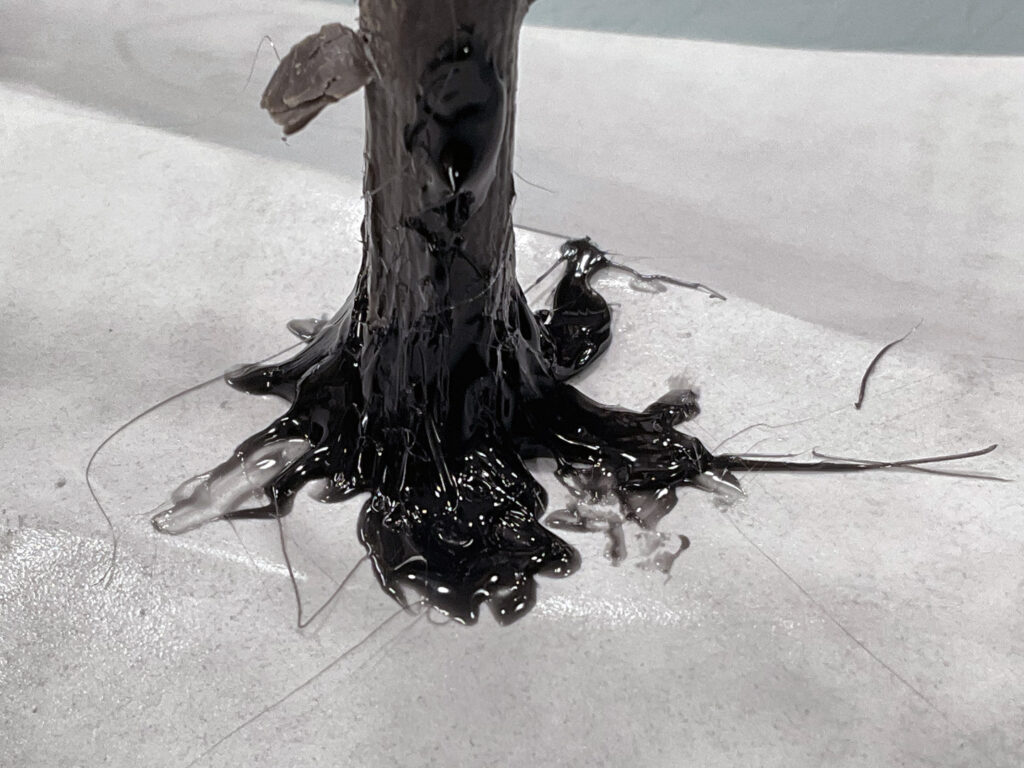
Next I drilled the center of the tree keeping sure not to drill through the side. A little wobbling of the drill allowed the opening to expand almost to the bark, creating the worn, still burnt hole at the top.
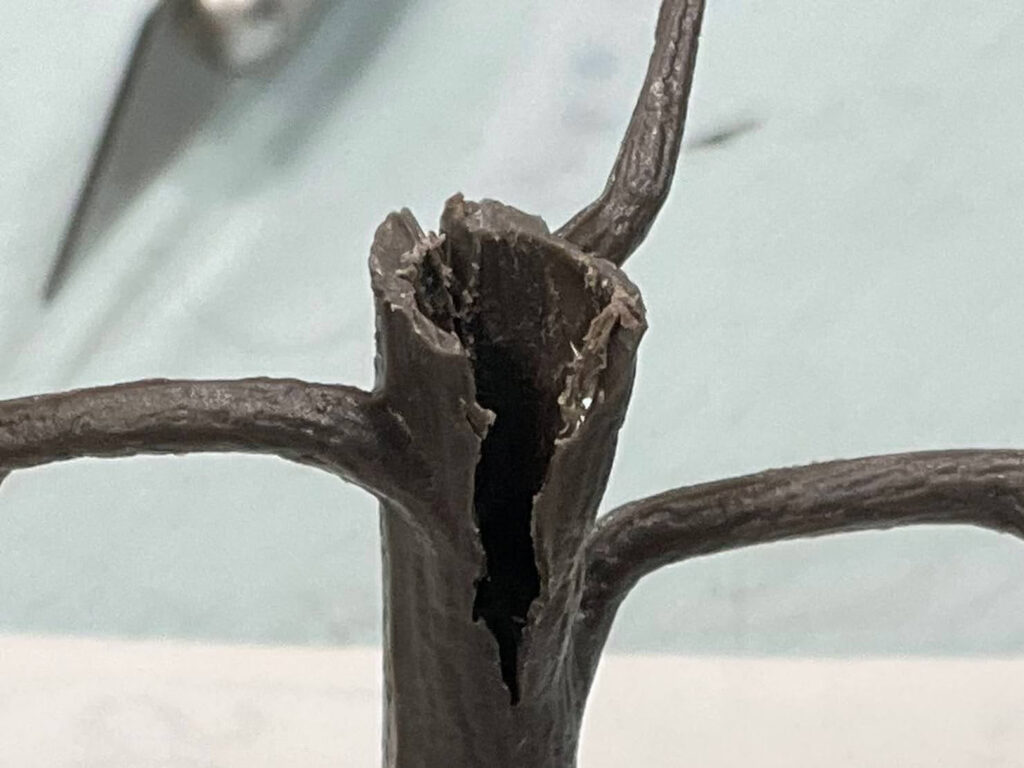
A base coat of Tamiya Grey Primer on the entire tree and the torn branch was used for the dying wood color that will soon be overlayed with a bark color.
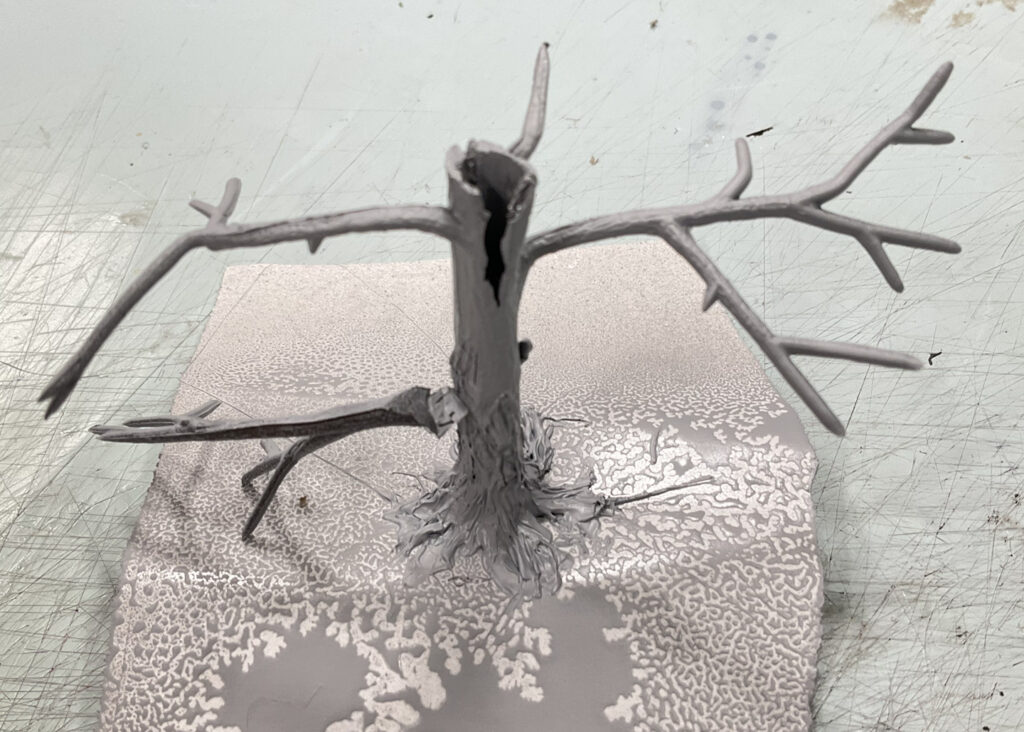
Using a water based permanent sepia colored india Ink, I slathered the entire tree, especially the hole. The fact that the primer was oil based served the wash well to push the ink into crevices, leaving high spots stained but still light. The ink dies quickly, and I just kept adding it till I got the look I wanted.

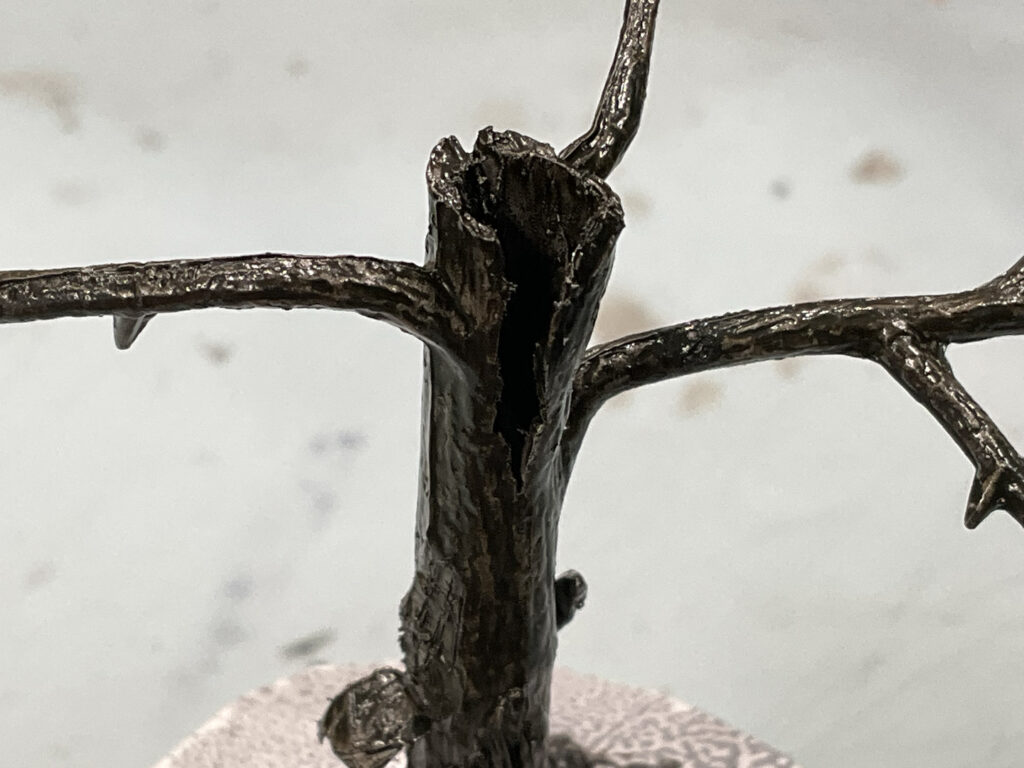
The Testors Dullcote, created an unexpected surprise. Even using light coats, the spray washed some of the ink off the high ridges in the armature’s and root’s bark, leaving highlights on those areas. This saved me the exercise of having to dry brush white for any highlights.
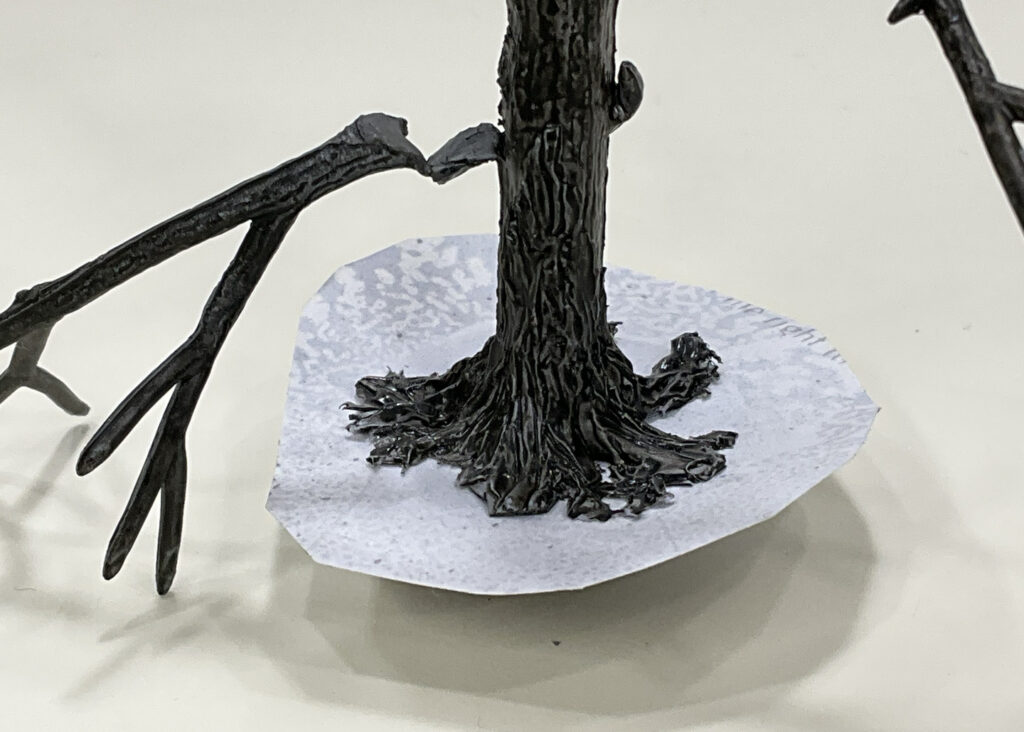

After it dried, I peeled off the waxed paper from the hot glue and planted it into a cardboard box where I reattached the broken branch. I also simulated further breaks in the branch that would have occurred when the heavy branch hit the ground as shown on the layout.

The final touch is the swinging tire, using a painted 3D printed tire and Fine EZ Line.

LIRR IS: Putting “dead” into Dead Season Modeling.

Comments are closed